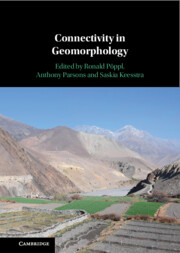Book contents
- Connectivity in Geomorphology
- Connectivity in Geomorphology
- Copyright page
- Contents
- Contributors
- Preface
- Acknowledgements
- Part I Introduction
- Part II Connectivity in Process Domains
- Part III Quantifying Connectivity in Geomorphology
- Part IV Managing Connectivity
- 12 Agricultural Land
- 13 Rivers and Wetland Systems
- 14 Drylands
- 15 Coasts and Deltas
- Index
- References
15 - Coasts and Deltas
from Part IV - Managing Connectivity
Published online by Cambridge University Press: 10 April 2025
- Connectivity in Geomorphology
- Connectivity in Geomorphology
- Copyright page
- Contents
- Contributors
- Preface
- Acknowledgements
- Part I Introduction
- Part II Connectivity in Process Domains
- Part III Quantifying Connectivity in Geomorphology
- Part IV Managing Connectivity
- 12 Agricultural Land
- 13 Rivers and Wetland Systems
- 14 Drylands
- 15 Coasts and Deltas
- Index
- References
Summary
Coastal deltaic floodplains provide important ecosystem services such as trapping sediment, reducing storm surge, and processing riverine nutrients. These landscapes are at high risk due increasing rates of sea level rise, accelerated subsidence, extraction of resources from the subsurface, and extensive human interventions. Human interventions to preserve, sustain, or restore ecosystem services often aim at reversing disconnectivity that is responsible for degrading many coastal ecosystems as it prevents the natural distribution of water, solids, and solutes over the delta plain. Deltaic floodplains with tidal freshwater and estuarine wetlands can be defined by the elevation of the wetland platform that controls the frequency and duration of flooding (hydroperiod), an example of the feedback between structural (elevation) and functional (frequency and duration of flooding) connectivity elements and reflected in the resulting couplings among system’s variables (process connectivity). These processes are critical to maintaining the function of coastal deltaic floodplains in mitigating CO2 enrichment in atmosphere and reducing nutrient loading to coastal waters.
- Type
- Chapter
- Information
- Connectivity in Geomorphology , pp. 379 - 404Publisher: Cambridge University PressPrint publication year: 2025

